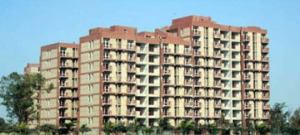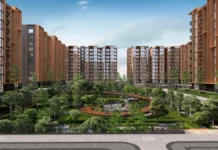 NEW DELHI: The eagerly-awaited draw of lots for the flagship ‘DDA Housing Scheme 2014’ next month can be seen online as the housing authority has decided to webcast the entire event, a top official has said.
NEW DELHI: The eagerly-awaited draw of lots for the flagship ‘DDA Housing Scheme 2014’ next month can be seen online as the housing authority has decided to webcast the entire event, a top official has said.
The webcast would be available for “unlimited” number of online users through a YouTube channel.
“A meeting was held with various vendors a few days ago, and the DDA vice-chairman has approved the proposal to webcast the draw through live streaming,” Director (Systems) of DDA, V S Tomar told PTI.
The tentative date for draw of the lots for the new scheme, which offers over 25,000 flats across various categories, ranging from Rs 7 lakh to Rs 1.2 crore, is November 5. The scheme closed on October 15 and has received over 8.5 lakh applications.
“Delhi-based vendors with prior experience in webcasting approached us and proposed to stream the event online through YouTube. We decided on YouTube and not DDA’s official website to preclude any chance of crashing of the site, given the online traffic it would attract on the D-Day,” Tomar said.
He said the proposal was approved as the proposed budget for the project by the vendors, turned out to be “cost-effective”.
“The proposal also will have no cap on online users as the video would be streamed online through a YouTube channel,” he said.
Gearing up for the draw, the DDA has planned to dedicate a server to deal with the anticipated “rush of online traffic” on its official website.
“As per the vendor for the draw, C-DAC again has been assigned the role, but the venue of the draw has not been finalized yet. It will either be Noida, where the C-DAC office and servers are located, or at the DDA headquarters, Vikas Sadan itself,” he said.
C-DAC (Centre for Development of Advanced Computing) had also conducted the draw for DDA’s last housing scheme in 2010.
“Both places have their pros and cons, and we want to conduct the procedure in the best possible way. If C-DAC agrees to shift its server at the Vikas Sadan, then we can do it either in our Auction Hall or the Conference Hall, both having a capacity of between 200-250,” he added.
Tomar said it was decided not to provide a link for the webcast on the DDA website as it would become prone to crash.
As part of our preparations ahead of the draw, DDA has planned to set up a dedicated served around the last week of this month, and it will have load-balancing facilities, to avert chances of crashing the website due to heavy traffic.
Meanwhile, the procedure for the draw has also been uploaded on the website and applicants can check the status of their application online.
“The draw takes about 60-90 minutes, and after 30 minutes or so we would be able to come up with the list of successful applicants on our official website,” Tomar said.
The draw would be overseen by a three-member team headed by a retired high court judge. It would also have two IT professionals, one from IIT-Delhi and another from the National Informatics Centre (NIC) to supervise the process.
The draw, which would be computerized, follows the system adopted in the 1980s, before which the draw was taken out manually.
“In 1979, DDA had introduced ‘New Pattern Registration Scheme’, following which there was a huge response and the draw system was automated after that for the first time. The first computerized draw for flats was conducted in 1981-82.
The first computerized draw for plots was for the Rohini Scheme of 1986,” Tomar said.
Initially the process was very “time-consuming” as the system was analogue, he said.
“The manual system involved two boxes, which were shaken after each draw of the lot. With computerized system, the shaking was just replaced by randomized selection of a number,” he said.
This scheme offers 25,034 flats, across various categories, namely EWS, LIG, MIG, HIG, Janta flats and one-room apartments. The 22,627 one-bed room apartments was a major draw for people this year.
The DDA official website had crashed on the day of launch of the scheme, following a massive response from online users prompting authorities to upgrade its server to meet the high-traffic demand. -PTI






